Chopta is a amazing vacation spot mendacity in Kedarnath Wildlife Sanctuary of country Uttarakhand at a upward thrust of 2,679 meters in any other case called “Smaller than regular Switzerland.”
Overview
Know About Chopta-Chandrashilla Trek
Chopta is a great destination lying in Kedarnath Wildlife Sanctuary of state Uttarakhand at a rise of 2,679 meters otherwise called “Smaller than normal Switzerland.” The path further prompts Tungnath; third sanctuary of Panch Kedar and the world’s most noteworthy sanctuary of Lord Shiva, and it likewise proceeds to Chandrashila “Moon Rock.”
Uttarakhand is the most wanted objective for adventurers since there are the wonderful spots which can mollify the adrenaline rush. You will Love the Heavenly perspectives in Chopta Tranquil Charm
Chopta expresses fragile impressions of the whole Himalayan reach and the macrocosmic sight of Chaukhamba tops, Nanda Devi and Mt. Trishul. This spot is scarcely possessed and has wonderful appeal. In view of the peaceful climate and being away from the group, its serenity is alive.
Get Great Experiences at Chopta
Chopta has an ideal experience to encourage one of life. It has an interesting exhibit of encounters to suit any range.
Witness the immaculate nature at its ideal and get heart contacting perspectives on gleaming pinnacles arriving at the sky.
Go through the timberlands loaded with Rhododendrons where the blossoms sprout in red and pink, get astonished by the glades that appear to be no unique from windows backdrop. Around evening time watch the sweeping of stars covering the sky and relish stargazing.
Awakening to the peeping of birds, the sound of spouting streams and the delicate song of trees, what can be preferable over this? What’s more, past anything, don’t miss the dawn! The sky changes numerous tones in only a couple of moments at this brilliant time.
DAY 1 : Drive from Rishikesh to Sari
- Drive Distance: 190 km
- Duration: 7-8 hours |
DAY 2 : Trek from Sari to Deoriatal
- Trek Distance:4.1 km
- Trek Duration: 2.5 hours
- Altitude Gain: 6,381 ft to 7,950 ft
DAY 3 : Trek from Deoriatal to Syalmi via Rohini Bugyal
- Trek Distance: 9.10 km
- Trek Duration: 6-7 hours
- Altitude Gain: 7,950 ft to 7,602 ft
DAY 4 : Trek from Syalmi to Baniya Kund
- Trek Distance: 5.40 km
- Trek Duration: 6 hours
- Altitude Gain: 7,710 ft to 8,520 ft
DAY 5 : Trek from Baniya Kund to Chandrashila via Tungnath and back to Sari
- Trek Distance: 8.70 km
- Trek Duration: 7-8 hours
- Altitude Gain: 8,520 ft to 12,083 ft
DAY 6 :Drive from Sari to Rishikesh
- Drive Distance: 190 km
- Drive Duration: 7-8 hours
Itinerary
Drive Distance: 190 km | Drive Duration: 7-8 hours |

Transport will be organized at 7.30 am sharp. This cost must be borne by adventurers and paid straightforwardly to the driver. The expense of the taxi is Rs 6,500 for each vehicle (5-6 seater) and Rs 9,000 for every Tempo Traveler (12 seaters) for the vehicle one way.
Trek Distance: 4.1 km | Trek Duration: 2.5 hours | Altitude Gain: 6,381 ft to 7,950 ft
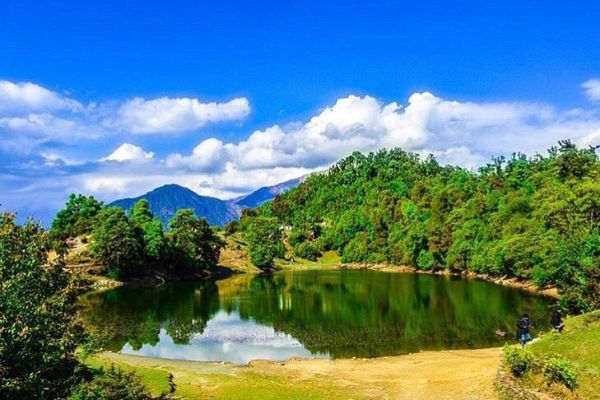
A simple day with a progressive jump on a distinct rough path. It becomes more extreme after the initial 30 minutes. A short stroll on even territory after around two hours of climbing takes you to the campground of Deoriatal.
Trek Distance: 9.10 km | Trek Duration: 6-7 hours | Altitude Loss: 7,950 ft to 7,602 ft
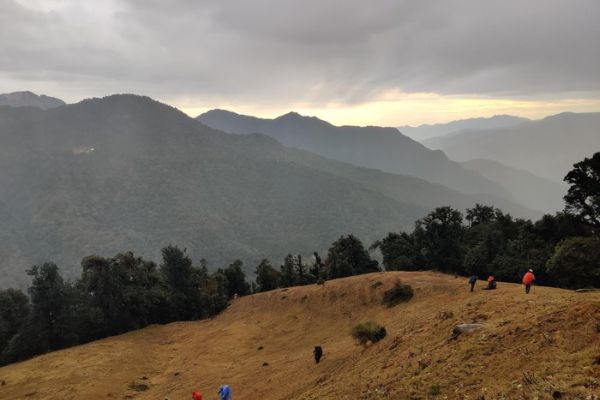
A moderate rising through an exquisite timberland trail loaded with rhododendron and maple trees. The path is a beautiful one, in any case, and dials down following an hour of climb to arrive at Rohini Bugyal. When you arrive at Rohini Bugyal, slip for 90 minutes to the Syalmi campground.
Trek Distance: 5.40 km | Trek Duration: 6 hours | Altitude Gain: 7,710 ft to 8,520 ft
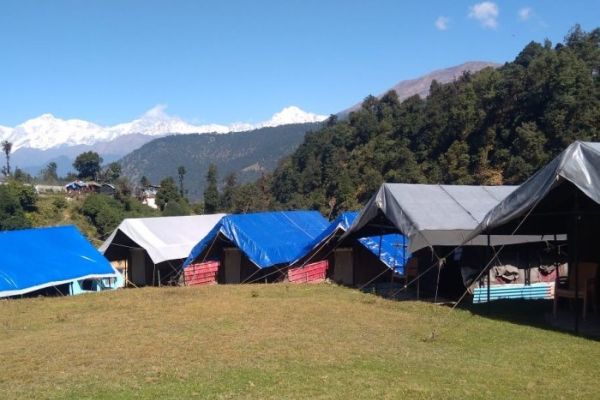
An hour of plunge till Akash Kamini waterway, trailed by a precarious rising through thick timberland. Following two hours of climbing, it’s a progression of risings and drops till Baniya Kund.
Trek Distance: 8.70 km | Trek Duration: 7-8 hours | Altitude Gain: 8,520 ft to 12,083 ft

Continuous rising to Tungnath on a very much spread out way, trailed by a more extreme move to Chandrashila for about 60 minutes. The drop is on a similar way. Note: Tungnath sanctuary opens just in summer and closes by Diwali.
Drive Distance: 190 kms | Drive Duration: 7-8 hours |
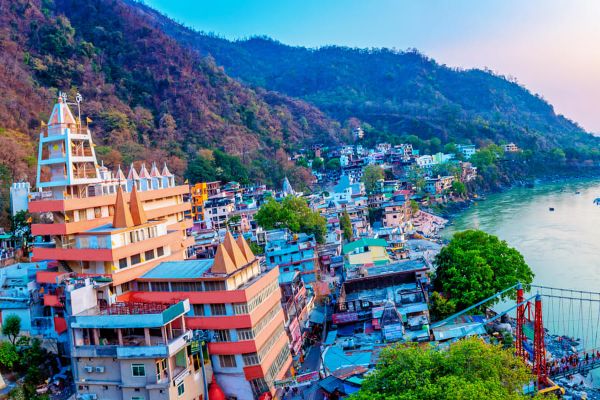
You will arrive at Rishikesh somewhere in the range of 6 and 7 pm. The taxi costs will be Rs 7,000 for each Bolero and Rs 10,000 for every Tempo Traveler
Include
- Guest House or Homestay
- Dome / Alpine Tents at all campsites- Twin sharing basis.
- Meals while on trek (Veg.)
- Transport-
- Mode of transport will be Bolero, Sumo or Tempo Traveller.
- All trekking permits
- Trek equipment (Tent, sleeping bag, mattress, kitchen & dining tent, toilet tent and utensils)
- First aid medical kits
- Mountaineering qualified trek leader and support staff.
- Mules to carry group equipment.
Exclude
- We expects all trekkers to carry their own backpacks. But, if you wish to offload your backpack, you can offload on mule by paying charges.
- Charges – Rs 1000 for the full trek.
- The backpack can’t weigh more than 11 kgs.
- Suitcases/strollers/duffel bags will not be allowed.
- Backpack should have a waterproof cover.
The Deoriatal Chandrashila trek is an easy-moderate one. It does not have too many steep climbs (except the summit push to Chandrashila). It does not have many long days.
Compared to all our Himalayan treks, this is perhaps the easiest one. It’s a good trek for beginners, families, and children.
Having said that, it is still a trek in the Himalayas with difficulties in terrain, temperatures, and weather.
When it comes to a mobile phone network and an internet connection, you’ll find a good network all across your trek. You will get a 4G network even at Chandrashila Top!
As for electricity, Sari Campus is the last point with electricity. At the Indiahikes base camp in Raithal, all the rooms are equipped with plug points for trekkers to charge their electronic devices.
However, once you leave the base camp, there is no electricity. We suggest you bring additional batteries for your cameras and a power bank with more than 10,000 mAh to last you the entire trek.
On the Deoriatal Chandrashila Trek, we usually take around 20- 23 trekkers in total.
Available Dates
-
- 1 Jan 2024 – 10 Jan (full)
- 11 Jan – 13 (Seats Left)
- 12 Jan – 7 (Seats Left)
- 13 Jan – 11 (Seats Left)
- 14 Jan – 14(Seats Left)
- 15 Jan – 13 (Seats Left)
- 16 Jan – 12 (Seats Left)
- 17 Jan – 10 (Seats Left)
- 18 Jan – 15(Seats Left)
- 19 Jan – 17 (Seats Left)
- 20 Jan – 18 (Seats Left)
- 21 Jan – 3 (Seats Left)
- 22 Jan – 13 (Seats Left)
- 23 Jan – 19 (Seats Left)
- 24 Jan – 16 (Seats Left)
- 25 Jan – 14 (Seats Left)
- 26 Jan – 22 (Seats Left)
- 27 Jan – 23 (Seats Left)
- 28 Jan – 33 (Seats Left)
- 29 Jan – 43 (Seats Left)
- 30 Jan – 23 (Seats Left)
- 31 Jan – 23 (Seats Left)
-
- 1 Feb- 29 Fab 2024(Open)
-
- 1 March – 31 March 2024(Open)
Dehradun is easily accessible from Delhi by bus, train or air. We discuss the details below:
By air
- Jolly Grant Airport is the nearest airport to Dehradun by plane, which is about 25 km from the city. You can find regular flights from Delhi to Dehradun.
- However, if you are planning to reach Dehradun by flight then it is better to come one day in advance.
By Train
In case, you want to reach Dehradun from Delhi by train then two express trains are quite convenient. With the train, it is an overnight journey. The two trains are mentioned below:
- Nandadevi Express – Train no: 12205 (Departure 11:50pm; Arrival – 5:40am)
- Dehradun Express – Train no: 12687 (Departure – 9:10pm; Arrival – 5:00am)
By Bus
From Delhi, you can find a regular bus service for Dehradun. ISBT Kashmere Gate is the main bus station in Delhi from where you will find both ac and non-ac buses for Dehradun.
However, it is always better to take government buses from Kashmere Gate ISBT. The bus will drop you at Dehradun ISBT and then we will send our staff who will pick you up from Dehradun Railway Station, so you need to reach there.
- At 06:00 am, Tata Sumo or any other vehicle like this will only pick you from Dehradun Railway Station.
- By 04:00 pm, you will be reaching Sankri.
- In the trek cost, food from Dehradun to Sankri is included
Trek Essentials: You can’t do the trek without these.
1. Trekking Shoes
Phulara Ridge needs sturdy trekking shoes that can withstand snow and have good grip.
Rental: We have the decathlons proper Quechua trekking shoes for rent Rent trekking shoes Here.
2. Backpack
A backpack 50-60 litres is required for a trek such as Phulara Ridge. Your backpack should have good hip support, shoulder support, and pockets should be accessiable quickly .
3. Clothing
Layering is the best way to protect yourself in the mountains. Layers provide maximum protection against all the elements. Layers are also great for protecting against the elements, especially when it changes rapidly in the mountains.
Base Layer: 3 – T-shirts
Carry 2 T-shirt, and wear 1. Wear full-sleeve, dry-fit T-shirts, preferably with collars. These will protect your neck and arms from sunburn. UV radiations can quickly burn you, especially in the high altitudes of the trek.
Dry-fit T-shirts dry quickly, dry quickly, and are quick drying in the event of rain. Collared T-shirts work better than those with rounded necks.
Cotton or Synthetic?We Indians love cotton. It makes sense to wear cotton down in the plains, where the heat can reach 40 degrees Celsius. It takes a while to dry once it is wet. Synthetic is the best choice for mountains where temperatures are cooler. They are quick to wick sweat and dry quickly. They can smell fast so make sure to have a roll-on deodorant.
Expert Tip: If you’re more prone to colds, you can carry a pair of thermal inners. From the past experiences of ours, using 2 T shirts over other helps to prevent from cold.
From Where To Buy:Buy from Decathlon.
5. Insulation Layers in Winter.
The Phulara Ridge Trek can be done in winter. You will need at minimum 5 layers of warm clothing if you are going between December and March.
You will require1 – inner thermals, 2 – light fleece, 1 – light sweater, and 1 padded jacket. Don’t buy your grandma’s sweaters. They can be very heavy. You want fleece jackets and sweaters that fold easily.
A padded jacket is the best choice for your outer layer. Water resistant materials are not necessary. You do need an outer jacket with a padded lining that keeps out the cold and wind. Make sure your padded jacket includes a hood.
6. Two – Trek Pants
This trek requires at least one pair of trekking pants and a maximum of two. One pair of pants should be worn and one additional for when it rains/snows. Trek pants with zip-off thighs at the thighs make them ideal for trekking. You should also choose quick-drying pants over cotton. Even in colder climates, they dry quickly.
TRack pants or trekking pants?Track pants can be used as a backup or double as thermal bottoms. Track pants aren’t trek pants so they shouldn’t be your main outerwear. They should be used as an emergency backup.
Compulsory Accessories, without these you will not be equipped to perform the trek or not able to do Trek
These accessories are necessary to carry. These accessories are mandatory for anyone who travels to Phulara Ridge. Trekkers tend to delay borrowing or purchasing accessories. We recommend the opposite. These accessories should be gathered first.
1. Sunglasses.
Sunglasses are required to prevent snowblindness. Expect to be walking on snowy stretches during a winter trek such as Phulara Ridge. Snow blindness can be caused by a small amount of direct sunlight (around a half-hour’s exposure). Because fallen snow acts like thousands upon thousands of mirrors, reflecting direct UV rays. You will need sunglasses that provide UV protection.
If the trekking day is sunny and bright (on meadows, open sections), you should wear sunglasses. You must not remove your sunglasses from a snowy section until it is fully crossed.
In case you use spectacles: You can buy oversized sunglasses for your glasses, which you can wear over your regular glasses (buy at Decathlon). Photochromic lenses are also available if you find this cumbersome.
Contact lens users: Contact lenses can be worn on the trek if you have them. The lens solution won’t freeze. It will not be a problem to change your lens inside your tent. You will only need enough cleaning solution to clean your fingers. Your contact lenses can be covered with sunglasses.
2. Suncap.
Suncaps are mandatory. A sun cap is mandatory for trekking. It can cause headaches, sunstrokes, rapid dehydration, and a drop in performance.
Important Information: The Golden rule of the mountains is to always cover your head. A sun cap is a protective layer that protects you from the sun’s harsh rays during the day. It also works well with naked UV rays. Sun caps keep your body’s temperature in check. The reverse is true in the morning/evening. Your head quickly loses body heat. The woolen cap stops heat from escaping your head.
3.Hand Gloves.
You will be handling snow quite a lot on a trek like Phulara Ridge. To grip things or hold onto snow, gloves are essential. The gloves should also keep you warm. You should get synthetic gloves with waterproofing on the exterior and a padded interior. Wear a tight-fitting fleece glove in your synthetic hand glove if you have difficulty obtaining the combination (not likely). This trek requires hand gloves.
Rent Hand Gloves right here….
4. Woollen Cap or Balaclava.
These should cover your head. You lose the most heat in the cold mountains from your head and not your hands, feet, or other parts of your body. Protecting your head is important, especially in the evenings when the sun sets. Your woollen cap should be worn at all times, including early mornings and late evenings.
A woollen cap that covers your ears can protect your sensitive ears. Balaclavas are a modernized version of the woolen cap. The balaclava covers your ears, neck, and other parts of your face. A woolen cap that covers only your head will not be sufficient, such as a woolen cap, will require a neck warmer or scarf.
Buy Wollen Cap right here….
5. Socks (3 sets).
You should also have three to four pairs each of socks for sports. You get warmth and cushioning from sports socks. The mantra here is to wear synthetic socks, or at the very least a synthetic blend. Cotton socks absorb sweat and water. These socks are difficult to dry.
Woollen socks are warm and cozy in the winter. Two sports socks are sufficient if you can’t get woolen socks.
Buy Wollen Socks here
6. Head Torch / Head Lamp
Many trekkers don’t know if they should get a torch or a headlamp. A headlamp is essential because it allows you to use your hands for other activities. You’ll need to use your hands for the Phulara Ridge Trek, including washing dishes, setting up tents, and holding your trekking poles.
7. Trekking Pole / Trekking Stick
You can balance and stability with trekking poles. You can reduce your energy use by up to 40%. There are steep ascents, and descents on the Phulara Ridge Trek. A pair of trekking sticks can make the difference between a pleasant and strenuous trek. India uses a single trekking stick. Two trekking poles will give you more stability and balance. You can also walk faster with them.
8. Rainwear.
Weather can quickly change on a trek. In a matter of seconds, a bright sunny day can quickly turn into a torrential downpour. To combat this, you will need a poncho and a rain jacket. A poncho, a large rain cover that covers your arms and heads, is what you need. Because it covers you and part of your backpack, it is very effective. It is very light and weighs almost nothing.
9. Rain cover for your Backpack .
Backpacks can save your life. Your backpack will hold all of your dry clothes and warm gear. Your backpack should be kept dry at all times. Most backpacks have rain-covers built in. If your backpack does not come with a rain-cover, you can either buy one or make a large sheet of plastic to fit the dimensions of your backpack. The plastic sheet can be wrapped around the backpack and held in place by a string or elastic.
10. Daypack (20-30 ltrs, optional).
Some trekkers choose to load their bags onto a mule or potores while on the Phulara Ridge Trek. Although we don’t encourage it, if you do choose to offload, then a daypack is required. You will need to carry water bottles, rainwear and emergency medicines. The campsites are the only place you can find your main backpack, which contains most of your equipment.
One day backpack is a small version of backpack which is generally of 20 – 30 ltr capability.
We give just Indian veggie lover food and fundamentally your dinner will contain Indian bread, vegetable, lentils and Rice alongside delightful treat. During your trip, we will serve three suppers daily including breakfast, lunch, and supper.
At night, you will likewise be served tea and tidbits and lip-smacking soup before supper. In the event that it will be a drawn out day of traveling, you will be given a pressed bite.
In the wake of doing a great deal of exploration on the wholesome prerequisites for the travelers, we set up the menu. Prior to assembling every one of the suppers, we likewise consider height acquired and climate.
The supper served by us while journey is impeccably offset with the perfect proportions of calories, sugars, nutrients, protein, fiber, and minerals. You really want to realize that every one of our cooks have extraordinary ability in cooking and have gone through exhaustive preparation. Thus, prepare to appreciate luscious and lip-smacking dishes during your trip.
You will be presented with lemon tea in the tent to begin your day with a revived inclination. Prior to leaving the camping area for traveling, you will be given a hot finger-licking breakfast like upma, egg bhurji, Maggie, omelet alongside tea or espresso.
On the off chance that, your trip will be longer one then we additionally offer a few new neighborhood natural products, for example, apples and, surprisingly, solid beverages like Frootie or Maaza. In the early evening, you will be served straightforward and solid lunch, while at around 04:00 pm, you will be given tea and a light night breakfast.
After you arrive at your campground around evening time, you will be served a warm and wonderful supper. Subsequent to understanding this, you probably got the possibility that with us, you don’t have to stress over food. In this manner, we will give you remarkable encounters.
Chandrashila Trek Highlights
- Visit the most elevated Shiva sanctuary of the world – the Tugnath sanctuary
- Experience a most extreme height of 12,083 ft – as you go through Har ki Pauri, Chopta, and Sari
- Trip and camp in the midst of the beautiful Himalayan mountains and Kedar, Chaukhamba, Nanda Devi, Bandarpunch and furthermore the Deoria Tal lake
- Partake in a selective directed bird watching experience – nothing better than reconnecting with nature


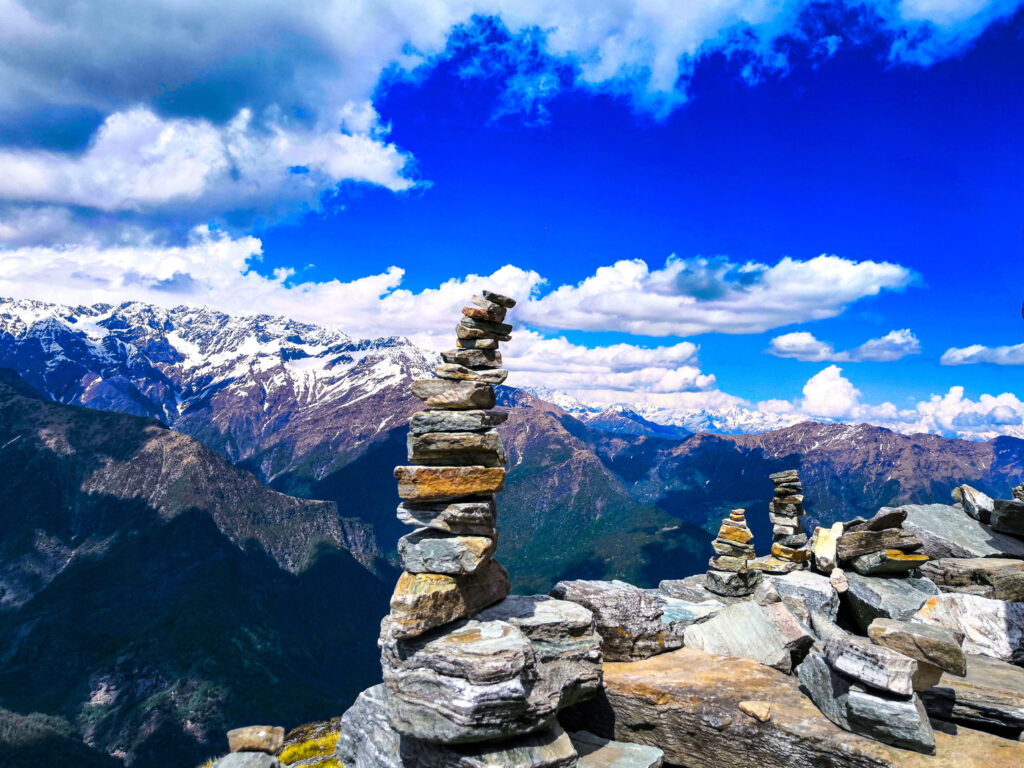

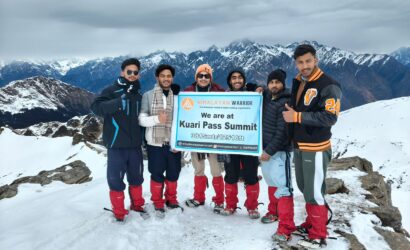


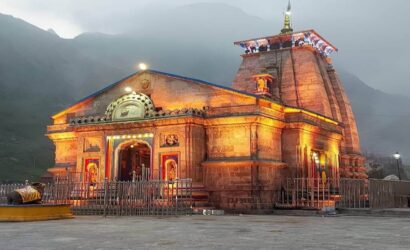



 About
About Contact
Contact
